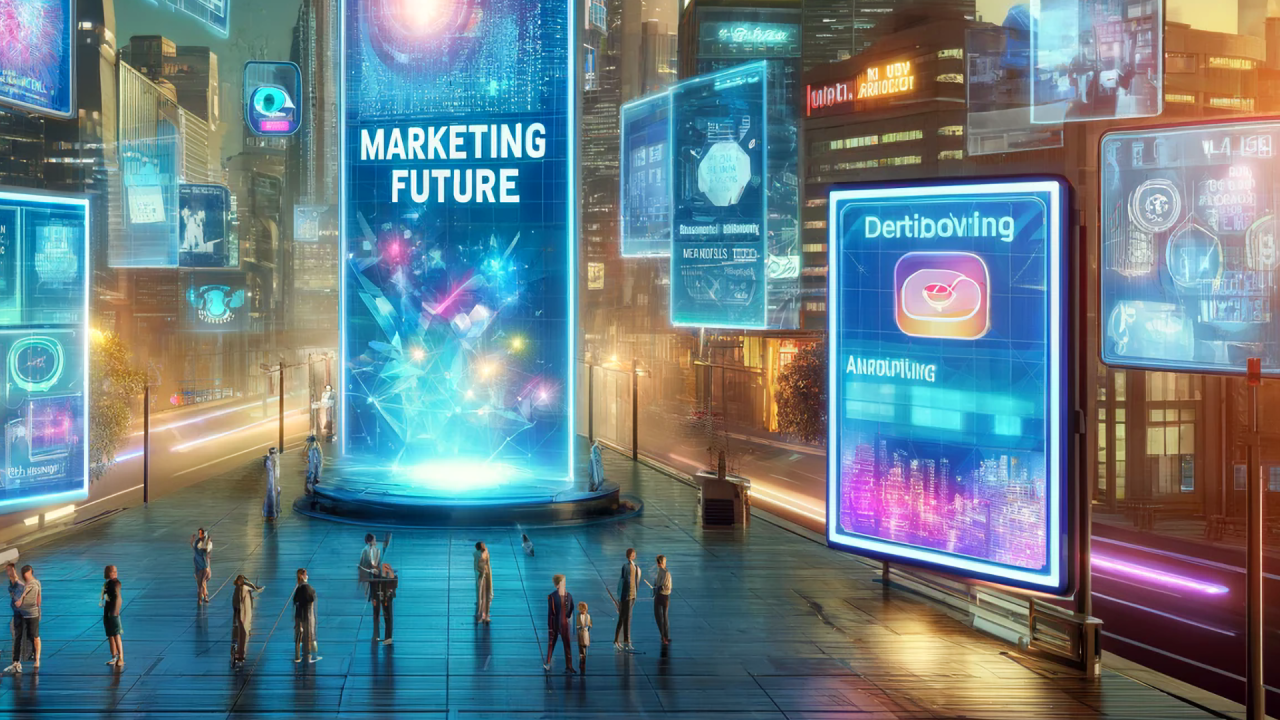Marketing has always been the engine that drives business growth, brand visibility, and customer engagement. From the days of door-to-door sales and newspaper ads to the current era of influencer partnerships and artificial intelligence, marketing has evolved into a dynamic, data-driven discipline. In the digital age, the landscape of marketing is more complex and exciting than ever before. This article explores how marketing has changed, the most effective strategies today, emerging trends, and what the future holds.
1. From Traditional to Digital: The Marketing Revolution
Traditional marketing—TV commercials, radio spots, print ads, and billboards—dominated the 20th century. While still relevant, these methods are often expensive and lack measurable analytics. Enter digital marketing: cost-effective, targeted, and highly measurable.
With platforms like Google, Facebook, Instagram, YouTube, and TikTok, businesses can reach specific audiences based on demographics, interests, behavior, and location. Small businesses now compete with giants because of the affordability and reach of digital channels.
2. Content is Still King
In digital marketing, content is the foundation of every strategy. Whether it’s blog posts, social media updates, videos, podcasts, or infographics, valuable content helps brands educate, entertain, and engage audiences.
Content marketing drives organic traffic, builds authority, and enhances SEO (Search Engine Optimization). Companies that maintain active blogs generate 67% more leads than those that don’t. High-quality content improves trust, which is crucial for converting leads into loyal customers.
Key types of content:
- Educational: How-to articles, tutorials, webinars.
- Inspirational: Stories, testimonials, and motivational posts.
- Entertaining: Memes, challenges, fun videos.
- Promotional: Product launches, discount announcements, sales.
3. The Rise of Social Media Marketing
Social media platforms have become marketing powerhouses. With billions of active users across Facebook, Instagram, LinkedIn, X (formerly Twitter), TikTok, and Snapchat, businesses can engage with customers in real-time.
Why social media matters:
- Brand awareness
- Customer service and feedback
- Community building
- Influencer partnerships
- Viral potential
Video content, especially short-form (like Instagram Reels and TikToks), dominates engagement metrics. Brands that adapt their messaging to each platform perform better than those who use one-size-fits-all content.
4. Search Engine Optimization (SEO) and Search Engine Marketing (SEM)
Getting noticed on search engines like Google is crucial. SEO helps your website rank organically, while SEM involves paid ads for quick visibility.
SEO includes:
- Keyword optimization
- On-page content quality
- Meta descriptions and alt texts
- Backlinks from reputable sites
- Mobile optimization and page speed
SEM (e.g., Google Ads) is ideal for instant visibility and targeting people with commercial intent. A well-balanced SEO and SEM strategy ensures both short-term and long-term traffic growth.
5. Email Marketing: The Unsung Hero
Email marketing remains one of the highest ROI (Return on Investment) channels. For every $1 spent, email marketing returns an average of $36.
Effective email campaigns:
- Personalize the message
- Offer clear value (discounts, content, updates)
- Use segmentation (grouping users by interest or behavior)
- Have strong calls-to-action (CTAs)
- Are mobile-friendly and visually appealing
Newsletters, automated welcome sequences, cart abandonment emails, and re-engagement campaigns are common types of successful email strategies.
6. Data-Driven Marketing and Analytics
Modern marketing thrives on data. With analytics tools like Google Analytics, Meta Insights, HubSpot, and CRM platforms, marketers can:
- Track customer behavior
- Identify best-performing campaigns
- A/B test headlines and content
- Measure ROI across channels
Data-driven decision-making reduces guesswork and improves effectiveness. Personalization, which is increasingly important, is only possible through deep customer insights gathered from data.
7. Influencer and Affiliate Marketing
Consumers trust other people more than brands. That’s where influencer marketing comes in—collaborating with individuals who have built loyal followings.
Nano and micro-influencers (1,000–100,000 followers) often have higher engagement rates than celebrities. Their recommendations appear more authentic and trustworthy.
Affiliate marketing is another performance-based strategy where affiliates earn commissions for referring sales or leads. It’s low-risk and scalable, making it attractive for startups and e-commerce brands.
8. Marketing Automation and AI
Marketing automation saves time and increases efficiency. Tools like Mailchimp, ActiveCampaign, and Salesforce automate tasks like:
- Sending emails
- Posting on social media
- Managing customer relationships
- Lead nurturing and scoring
AI in marketing enables:
- Predictive analytics (what customers will do next)
- Chatbots for customer service
- Personalization at scale (dynamic content)
- Content generation and recommendations
As AI continues to evolve, marketers can expect even more tools to optimize strategy, creativity, and customer experience.
9. Mobile-First Marketing
More than 60% of global web traffic now comes from mobile devices. Brands must ensure their websites, ads, and content are mobile-optimized.
Mobile marketing includes:
- Responsive web design
- SMS marketing
- Mobile apps
- Mobile-friendly email and video formats
- Location-based promotions (geo-targeting)
Neglecting mobile users means losing a massive chunk of potential customers.
10. The Future of Marketing
The future of marketing lies at the intersection of technology, creativity, and empathy. Customers today seek personalized, meaningful, and frictionless experiences. Emerging trends include:
- Voice search optimization: With smart assistants, more users are using voice instead of text.
- Augmented Reality (AR): Virtual try-ons and immersive experiences will become standard in retail and e-commerce.
- Sustainability marketing: Consumers favor brands with clear environmental and ethical values.
- Web3 and Decentralized Marketing: Blockchain may disrupt data ownership, influencer monetization, and ad transparency.
Marketers of the future must be adaptable, data-literate, and deeply human in their messaging.
Conclusion
Marketing has come a long way from simple flyers and cold calls. Today’s marketers are digital architects—blending technology, data, psychology, and storytelling to capture attention and build trust. Whether through personalized emails, influencer collaborations, or cutting-edge AI tools, the core principle remains the same: know your audience and deliver value.
In a fast-changing world, the businesses that invest in innovative, ethical, and customer-centric marketing strategies will not only survive—they will thrive.


